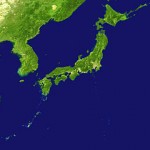A Japanese address is much longer than a Western one. Generally, it can have the following parts:
JAPAN
Name of Region (-fu)
Postcode and Name of Town (-shi)
Name of City District (-ku)
Name of City Subdistrict
Name (and number) of Neighborhood (-cho)
Number (and name) of building (and/or apartment)
Name of Person
Note that this from-large-to-small approach is the normal way of writing a Japanese address, very much along the idea that the group is everything and the individual is nothing. Also, in Japan, there are hardly any street names, and if there are any, they are rarely used in an address. Instead, the neighborhood (-cho) and the number of the building are used. Of course, building numbers are not given out consecutively along a road, but consecutively according to the date of building the house…
As you can see, instead of the usual Person-Street-City address that takes up only three lines, the important parts of my address take up six, if I ignore the first two lines which are not really needed for a large city like Kyoto. With a bit of squeezing, I can get it down to five lines, but it is still too much for the average Western database.
I still have an account in Germany and I am still using their credit card, mostly for online purchases. Unfortunately, my German bank insists on sending me physical, paper credit card bills instead of electronic ones, and they just cannot wrap their mind around my address. The last three letters I have received from my German bank used three different subsets of the six lines of my address, but never the complete one.
Once the city district and subdistrict were missing, which is not too bad because the postcode is very specific and this is part of the coding. Another time the building name and number were missing. Thank goodness, the neighborhoods in Japan are very small, and my neighborhood only comprises an apartment complex with a management office, so it is still possible to find me. And so far, only a single time the full post code was present, but luckily the last and thus most important of the seven digits were always there.
I have no idea how this can happen, I have already had several email exchanges with my assistant at the bank about this. It fascinates me that the mail still reaches me, although somewhat delayed of course. Thank goodness the letters are never urgent, and thank goodness there is a post office worker somewhere in Japan, possibly in Kyoto, who goes through all the trouble to find out the correct address so I can receive my mail.
Still, I wish it would be simpler and faster, and I would not cause any extra work for anybody. I will contact my bank in Germany about this. Again…

